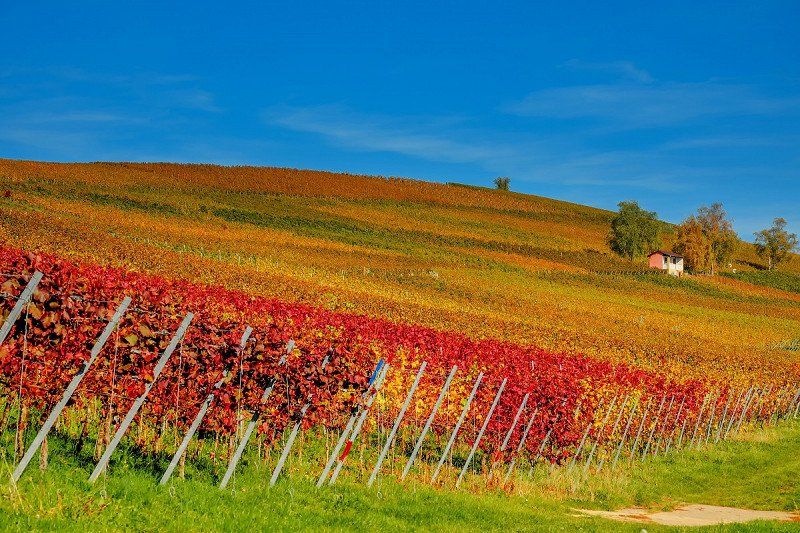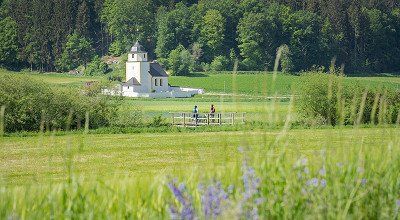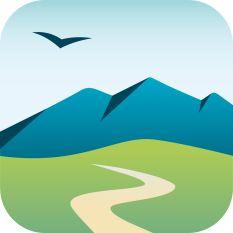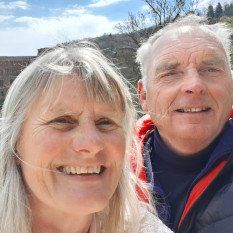There are many ways to enjoy a motorhome trip or camping holiday in Germany that revolves around wine and pleasure. Some of the best experiences can be found along the Baden Wine Route. You will come across panoramic views and sun-drenched valleys with historic castles and palaces, picturesque wine villages with winding streets and modern wine-growing architecture as well as a wealth of opportunities for wine tasting and outdoor activities surrounded by vineyards. Although some places have postponed their traditional wine festivals for the time being, there is still a lot to discover. Freeontour has put together a few tips for your next getaway.
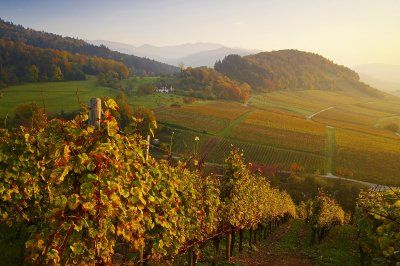
Where is the Baden Wine Route?
The Baden Wine Route stretches just over 500 kilometres through the Baden wine regions along the Black Forest – having more than doubled in length as of 2014 from the roughly 200 kilometres it was before. Starting at Baden-Baden on the western edge of the northern Black Forest, the Baden Wine Route now also goes through the Ortenau and Breisgau regions into the foothills of the Black Forest, makes a loop around the Kaiserstuhl and Tuniberg hills in the Upper Rhine Valley and then continues through the Markgräflerland region to Weil am Rhein in the south. Cities along the Baden Wine Route offering a high cultural experience include Karlsruhe, Baden-Baden, Offenburg, Freiburg, Breisach, Müllheim and Lörrach on the western edge of the Black Forest.

Which wines are made along the Baden Wine Route?
The vines and vineyards scattered across the landscape flourish along the Baden Wine Route thanks to the almost Mediterranean climate of the region that favours viticulture by ensuring many hours of sun and lukewarm nights in summer. Spread over more than 13,000 hectares, the vines grow on a variety of soils – from moraine gravel, lime soil, clay soil and marly soil to loess deposits, volcanic soil, shell limestone and Keuper – producing very different wines. Due to the climatic conditions, soil and sites, more than half of the acreage along the Baden Wine Route is planted with Pinot varieties. But other types of grapes are also cultivated in the local regions, e.g. Chasselas is dominant in Markgräflerland, Pinot Blanc, Pinot Gris and Pinot Noir in the Kaiserstuhl; Riesling is grown alongside Burgundy wines in Ortenau, Auxerrois in the Kraichgau and Pinot Meunier in Tauber Franconia.
Video: Impressions of the Baden Wine Route
Travelling along the Baden Wine Route by motorhome – the best spots to visit
Stretching 500 kilometres, the Baden Wine Route has a host of small and large cities with a lot to offer. There are way too many to describe here or drive through for just the one holiday. However, Freeontour has put together a few suggestions for planning your itinerary from north to south – and it's up to you when and where to stop and admire a beautiful spot along the way.
Stopover #1: The Badische Bergstraße district between Laudenbach and Wiesloch
Fruity wines grow on the slopes of the Bergstraße between Darmstadt and Heidelberg thanks to roughly 1,600 hours of sunshine a year. Small vineyards and vineyard lodges are spread across the landscape, which is broken up by almond and peach trees between the vineyards. In addition to the vineyards, you will also find many forests, meadows, castles, palaces and picturesque villages in between.
It's worth stopping over at well-known wine towns, such as Laudenbach, Hemsbach, Weinheim, Hirschberg, Schriesheim, Heidelberg, Wiesloch and Leimen. Wine tourists are strongly recommended to visit the large keg in the electoral wine cellar at Heidelberg Castle. It can hold 220,000 litres and is so large that there's a dance floor on top of the keg where people once used to party the night away. If you prefer a more tranquil atmosphere, go on the wine and culture hiking trail in Heidelberg-Rohrbach. 25 information spots on the roughly 8 kilometre-long route provide more details on the wine, grape varieties, geology, climate, lifestyle culture and fauna and flora of the region.

Stopover #2: The Kraichgau region in the "Land of 1,000 Hills"
There are more than 40 RV parks in the Kraichgau region – perfect for a camping holiday or a long weekend away. Popular wine towns in the area include Sulzfeld, Kürnbach, Östringen, Malsch and Ubstadt-Weiher, where you will be tempted by the quaint inns and hospitable wine growers to try local traditional fare and wine. Ravensburg Castle near Sulzfeld also offers a combination of delicious food and wine with a wonderful view over the Kraichgau hills and vineyards.
If you feel like being more active, you have a range of options to choose from, such as the Letzenberg Malsch wine hiking trail, a trip to the Oberderdingen wine plateau or the wine trail around Kürnbach. Or you could cycle the "Riesling & Besen" tour.

Stopover #3: Ortenau, a wine paradise with steep slopes
Nestled in the heart of Baden, between Gernsbach in the Murg valley and Gengenbach in the lower Kinzig valley, lies the Ortenau region. The landscape of this diverse cultural landscape has impressive panoramas between the banks of the Rhine and vineyards, idyllic wine villages, bathing lakes and steep slopes. Moreover, castles, palaces and monasteries bear witness to the centuries-old viticulture tradition. Some of the wineries are among the oldest and largest in Baden – after all, the mild climate here provides about 1,700 hours of sunshine a year. Accordingly, Pinot Noir is the dominant grape here, but the soil and conditions are also good for Riesling. The Müller-Thurgau, Pinot Gris and Pinot Blanc grape varieties are grown in the Ortenau as well, but to a much lesser extent.

You can experience wine in a number of ways in the Ortenau, starting with wine cellar tours and wine tasting on site at the wineries, to cycling tours through the vineyards through to hiking trails such as the Ortenau Wine Trail. Other attractions for wine tourists include tours with certified wine experience guides in the Ortenau region and sleeping in a wine barrel in Sasbachwalden. We recommend the Klingelberger 1782 – a wonderful Riesling from the Ortenau. Places that are popular in the region and definitely worth visiting include Baden-Baden, Bühl, Sasbachwalden, Kappelrodeck, Oberkirch, Durbach, Offenburg and Gengenbach.
Stopover #4: Enjoy the sun and wine in Breisgau
The Breisgau is considered to be Germany's warmest region. Therefore, it's hardly surprising that viticulture has been at home here for more than 1,000 years. The Breisgau wine region stretches from Oberschopfheim just outside the city of Offenburg in the north to the university town of Freiburg in the south. The main grape variety in Breisgau is Pinot Noir, but Müller-Thurgau as well as Pinot Gris and Pinot Blanc are also grown here.
Moreover, the area is abundant in castles, palaces and many more historic buildings, while the cities and towns offer a variety of architectural styles with their stately town houses, picturesque half-timbered buildings and magnificent town halls. Well-known wine-growing towns include Ettenheim, Emmendingen, Herbolzheim, Glottertal, Lahr, Kippenheim, Buchholz, Malterdingen, Freiburg, Kenzingen and Oberschopfheim. There are also a range of activities awaiting wine tourists here, such as the Breisgau Wine Trail, the wine trails on the Kaiserberg hill, the Grape Garden ("Rebsortengarten") with an observation tower between Ettenheim and Herbolzheim, the Four Castles Trail as well as the highest observation tower in Germany with a view over Emmendingen – not forgetting the Breisgau wine growers who also hold wine tastings and wine cellar tours.

Stopover #5: High up on the Kaiserstuhl on the sun terrace between the Black Forest and the Rhine
The Kaiserstuhl and Tuniberg rise almost like islands from the Upper Rhine plain between the Black Forest and Alsace, offering all kinds of stunning panoramic views. The region is a Pinot stronghold due to its climate, which is why viticulture here focuses on Pinot Noir and Pinot Gris. However, Müller-Thurgau, Pinot Blanc and Silvaner are grown here as well, but to a much lesser extent. And you can try them to your heart's content in the popular wine villages in the region, such as Breisach, Bahlingen, Bötzingen, Eichstetten, Endingen, Gottenheim, Ihringen, Merdingen, Riegel, Sasbach, Teningen and Vogtsburg.

There are numerous opportunities for you to enjoy wine tastings and wine cellar tours in the Kaiserstuhl area. A favourite with tourists is the Badischer Winzerkeller in Breisach with the largest wooden barrel cellar in Germany. Due to Corona, however, they have stopped giving guided tours for now. But some wine growers continue to do so on a smaller scale. Also worth visiting is the Kaiserstuhl Wine Museum in Vogtsburg-Achkarren, which houses an extensive collection on the development of viticulture, grape varieties and geology. If you want to see something slightly more unusual and bizarre, head to the Kaiserstuhl Corkscrew Museum in the historic old town of Burkheim instead – the first corkscrew museum in Germany with 1,000+ exhibits to do with opening wine bottles. Moreover, there are a large number of hiking and cycling trails in the region, which frequently reveal amazing panoramic views.

Stopover #6: The end of the Baden Wine Route in Markgräflerland
The last region on our motorhome trip along the Baden Wine Route lies between the Rhine and the Black Forest mountains: Markgräflerland, spanning from Freiburg all the way down to Weil am Rhein just before Basel. The vineyards stretch up to the edge of the Black Forest, while cosy wine villages are scattered along the roads, such as Auggen, Bad Bellingen, Badenweiler, Ballrechten-Dottingen, Buggingen, Efringen-Kirchen, Eschbach, Heitersheim, Kandern, Müllheim, Schliengen and Sulzburg – all obviously worth visiting. If you want to actively explore the wine culture of the region, go for a short hike on the roughly 5.5 kilometre-long wine trail on the steep vineyard slope at Castellberg as you will not only come across a lot of information about wine on the way, but also an observation tower with a panoramic view of the hills.
If you go on a wine tour in Markgräflerland, there's one wine you won't be able to avoid: Chasselas, a very old grape variety that is dominant in the area. Moreover, Pinot Noir, Müller-Thurgau, Pinot Blanc and Pinot Gris are also at home here. In addition to various events, wine tourists in the region should head to the Wine Label Museum at the Dr. Schneider winery in Müllheim-Zunzingen where visitors can see 200 years of wine history on thousands of labels. The focus is on labels from Baden, with the oldest being from 1811. Moreover, 1,200+ exhibits from other German wine-growing regions are on display, e.g. from the Moselle, Rheingau, Palatinate, Württemberg and Franconia, along with international labels, old champagne labels and artist labels.


